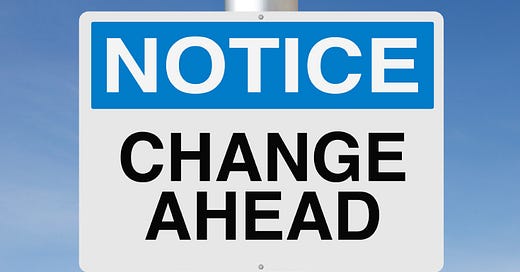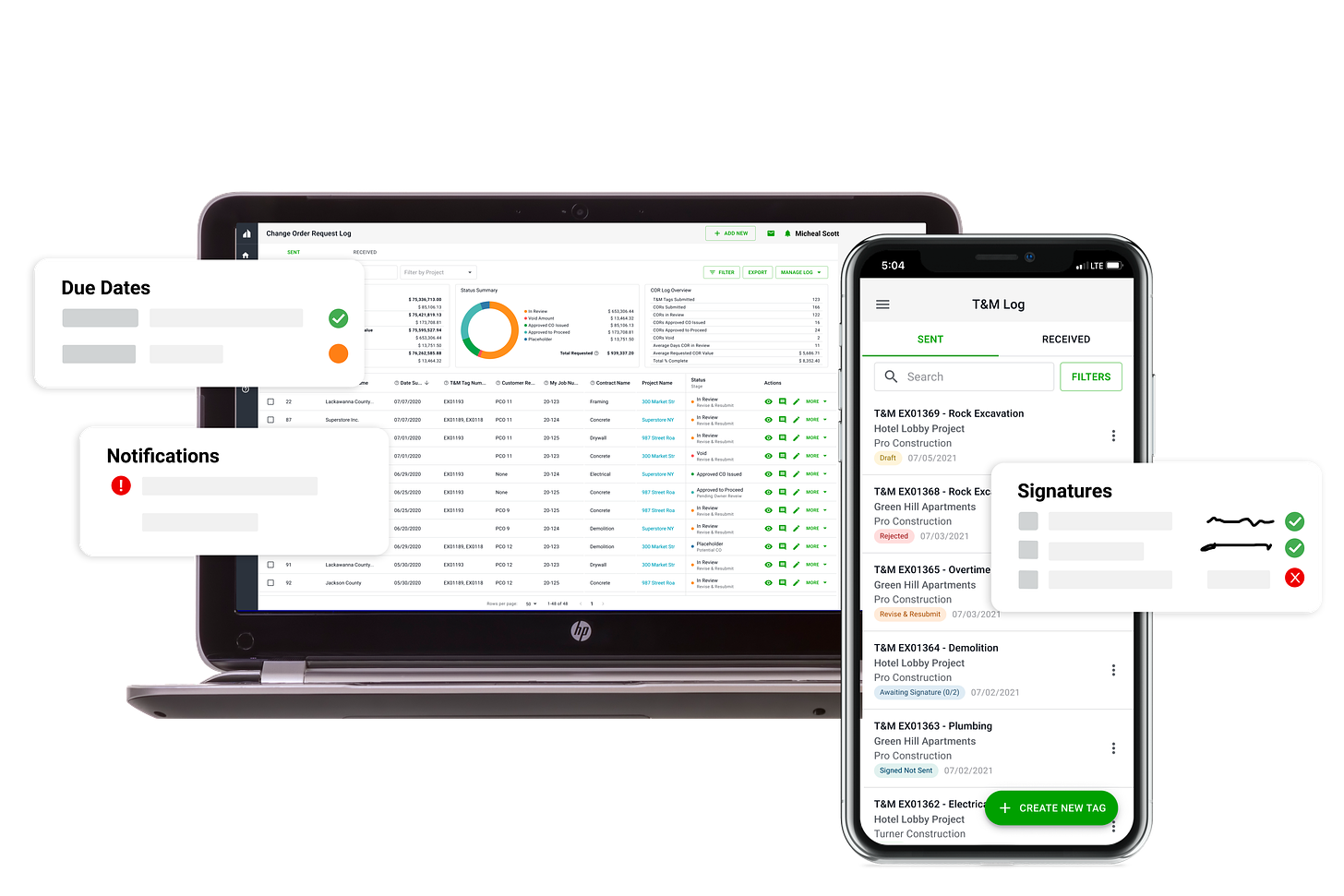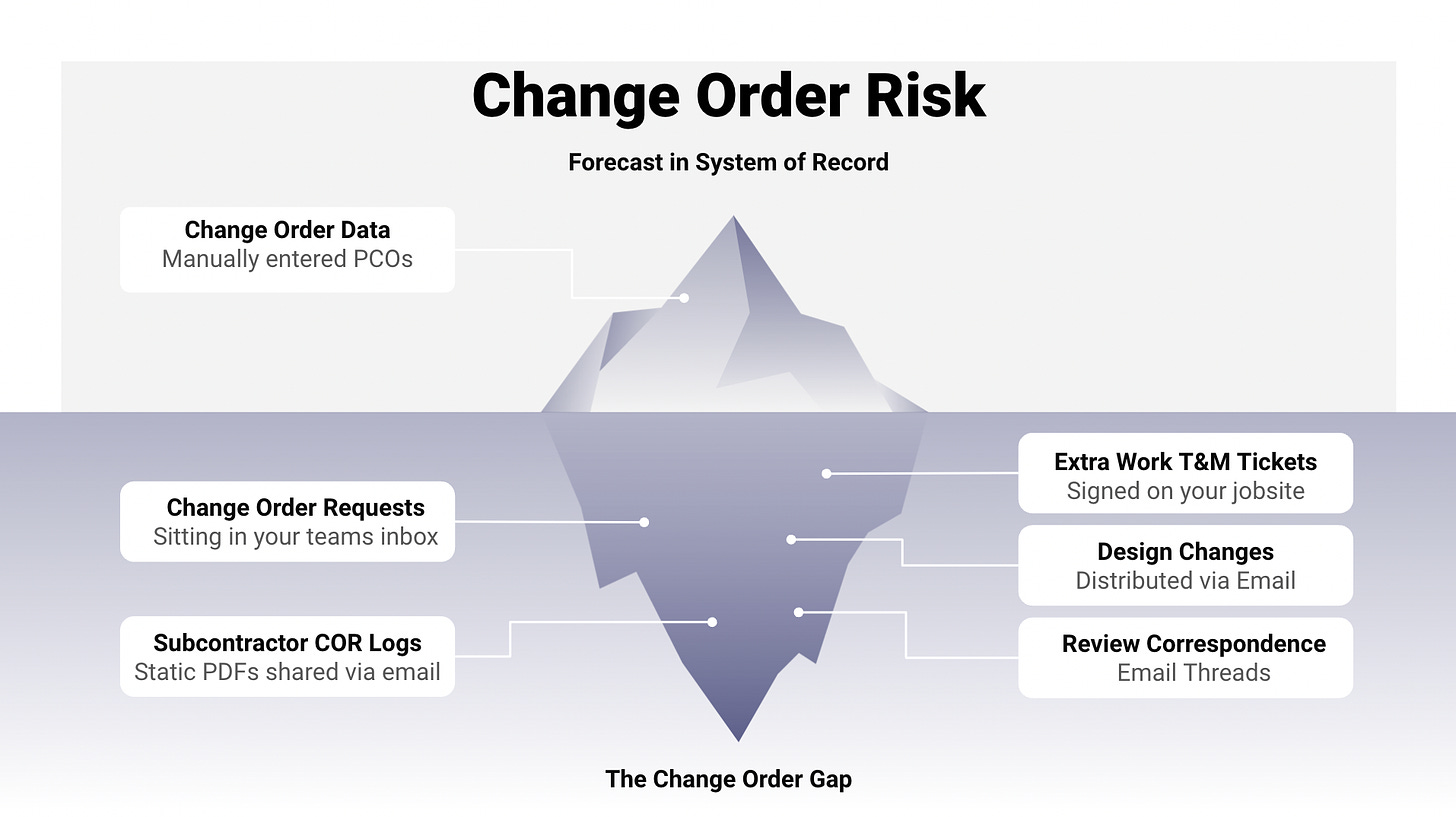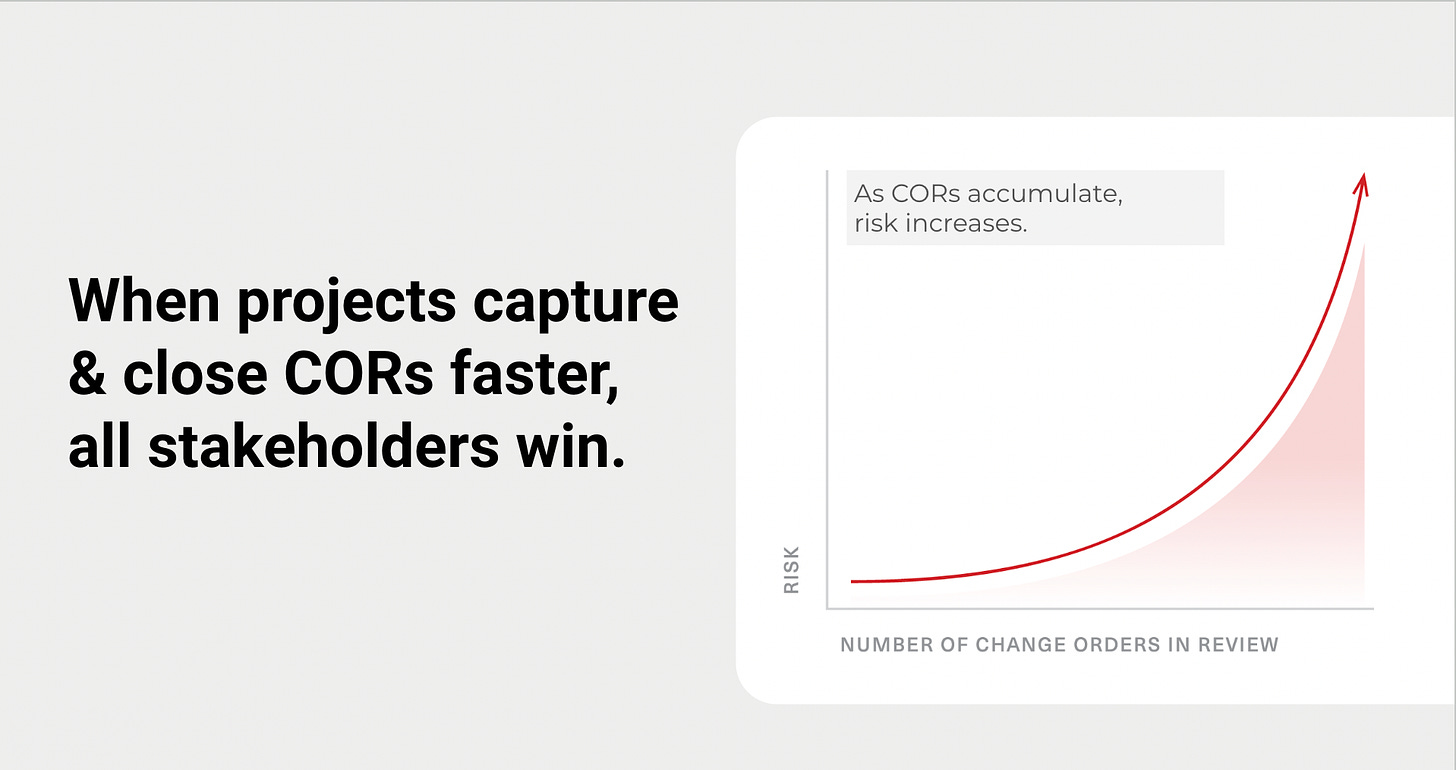Bridging the Change Order Gap
How Project Managers Are Closing the Change Order Gap Between GCs and Subs
👋 Welcome to The Influential Project Manager, a weekly newsletter covering the essentials of successful project leadership.
Today’s Overview:
The "Change Order Gap" in construction, refers to the disconnect between various stakeholders' financial systems, leading to unresolved Change Orders, increased risk, and inefficient workflows.
The consequences of this gap include wasted time, unreliable forecasting, delayed payments, decision-making delays, and strained stakeholder relationships.
To bridge this gap, many leading project managers are adopting the Universal Change Order Log, a cloud-based solution by Clearstory, providing real-time visibility into Change Order risks, streamlining communication, and simplifying Change Order management processes.
Today’s Newsletter is brought to you by Clearstory - the modern way to communicate changes!
With Clearstory, instantly connect and collaborate with your project team, no matter which financial software you're using. Say goodbye to outdated carbon copy T&M Tags, manual COR logs, and endless email searches!
Join a rapidly expanding community of General Contractors, Specialty Contractors, and Project Owners who benefit from real-time updates on Change Order Requests and T&M Tags, ensuring reduced risks, time-saving, and enhanced transparency for everyone involved.
How Project Managers Are Closing the Change Order Gap Between GCs and Subs
Filed under: Construction, Project Management
In construction, as outstanding Change Orders accumulate on projects, risk goes up for all stakeholders.
As the focal point for organizing a project for success and ensuring changes are surfaced, the The General Contractor Project Manager is charged with communicating and resolving those changes in order to reduce risk for all project stakeholders:
For Specialty Contractors, Change Order risk represents delayed payments or even a loss in revenue on out-of-contract work they may have already performed and financed out-of-pocket.
For the PM and the General Contractor, accumulating Change Orders create blind spots in forecasting, leading to the real risk of fee erosion when costs mount unseen.
For Project Owners, accumulating Change Orders turn into end-of-project surprise costs or disputes, and limit the ability to make proactive and dynamic decisions to increase asset value.
So if everyone benefits from resolving Change Order requests faster, why do even the best project managers still struggle to reduce outstanding Change Orders?
The answer is: The Change Order Gap.
What is The Change Order Gap in Construction?
The Change Order Gap is the gap between everyone’s financial systems of record, the different software platforms where everyone tracks their own project budget.
In other words, stakeholders often only see a small part of the total budget, even though there's more hidden below the surface.
All construction financial software has Change Order Management built-in to forecast potential changes and how they impact budget from a cost and revenue perspective.
But the systems are private by design to control access to business-critical financial information. Structurally, it works well to protect sensitive financial information, but collaboratively, it means construction teams continue to rely on external workflows to align on outstanding change order exposure and risk.
That means PMs and subs continue to solve for the Change Order Gap by sending static COR logs back and forth through email, attempting to ensure version control and save corresponding documents to file folders, track down approval correspondences from other emails, and then reconcile it against their system of record.
On top of sending static COR Logs back and forth, teams rely on email threads and manual PDF markups for review, build email distribution lists for design changes and other pricing exercises, and still use carbon copy for tracking T&M Tickets. It’s all just more emails, spreadsheets, screenshots, and attachments.
Jacob White is a senior project manager at Menlo Park, CA-based NOVO Construction, where on any given project, there could be hundreds of CORs and T&M Tags tracked on paper, email, and excel that need to get entered into NOVO’s financial system for forecasting.
“For two or three years I was either spending a Saturday each month catching up on Change Order paperwork or working until 10 or 11 pm a few nights a week to avoid working on the weekend,” White says of his search to find a solution so Subs could uniformly and easily upload CORs and Tags in a systematic way.
Sure, all of these workflows are used as an attempt to create the clarity needed to close the Change Order Gap, but they routinely fall short, and even as PMs work frantically to ensure they have accounted for exposure, there’s often still uncertainty on what lies below the surface.
“There’s always a nerve-wracking moment at the end of a job as I account for varying change orders, when I wonder if everything is accounted for, and hope that nothing was inadvertently overlooked,” explains Tami Williams, a project manager at San Jose, CA-based Blach Construction who, like White, was searching for a way to close The Change Order Gap and eliminate all of the manual data entry and laborious paperwork needed just to check T&M against scope and resolve CORs to her system of record for forecasting.
What’s the Impact of The Change Order Gap to the Construction Industry?
The negative impacts of the Change Order Gap are all too real for project managers. The excessive amount of time and effort wasted on organizing and searching for Change Order documentation results in immense stress, anxiety, and even burnout for project teams. Wasted time, revenue erosion, and payment and project delays are just a few of the symptoms of the Change Order Gap at work:
Wasted Time: Because of the Change Order Gap, teams often spend more time organizing, creating and finding Change Order Documentation than they actually do creating, reviewing and managing Change Orders, leading to an insane amount of wasted hours.
Unreliable Forecasting: Since the Change Order Gap makes it hard to see accumulating risk, PM forecasts are vulnerable to gaps and blind spots. Without a real-time, accurate accounting of Change Order exposure from all trade partners, forecasts can’t account for unforeseen costs.
Payment Delays: When project partners can’t share and resolve Change Order risk quickly, cash flow is stifled. Tracking T&M on paper, driving tickets back to the office for processing, and the time suck of requesting, revising, and marking up static COR logs via email all contribute to days aging on Change Order requests. It can take weeks or even months for CORs to navigate back and forth across the Change Order Gap before payment is approved.
Delays in Decision Making: The lack of visibility across the Change Order Gap prevents GCs and owners from making practical and strategic decisions on design changes and project improvements. And when design changes do occur, conducting pricing exercises back across the Change Order Gap can add more delays to the project schedule (not to mention everyone’s financial position on the project).
Strained Relationships: Lack of transparency, limited visibility, and accumulating Change Order risk ultimately creates friction between project stakeholders, and the lack of a shared, real-time communication tool to bridge the Change Order Gap leaves everyone at the mercy of the status quo: contentious negotiations and hard feelings.
Using the Universal COR Log to Close the Change Order Gap
Looking for a way forward, influential project managers like Tami Williams and Jacob White have adopted the use of a Universal Change Order Log, a shareable, cloud-based clearinghouse that works alongside closed systems of record so all stakeholders can have visibility into outstanding Change Order risk instantly.
Developed by Clearstory, the Universal COR log is powerfully simple and can be set up on a project in minutes. Instead of emailing COR documents back and forth you simply upload them into Clearstory, which automatically logs every T&M ticket and Change Order Request and keeps an updated audit trail for all parties.
Want to see your risk exposure? You simply log in and see the status of all outstanding Change Orders in real-time. With the click of a button, you’ve solved the Change Order Gap.
White says having a purpose-built solution for Change Order management was key to bridging the Change Order Gap in a way that his other systems weren’t designed to do, and the simplicity of a Universal Change Order Log has ramped up field adoption, too.
“It's simple, powerful, and effective,” he explains. “Other systems have layers and layers of features, but why over complicate something that is already so time-consuming? Our projects are fast-paced and we need something our subs can adopt quickly without much training.”
Since moving to a Universal COR Log, NOVO Construction PMs have gained the ability to realize cost exposures from T&M Tags immediately while maintaining an organized file of Subcontractor Change Orders.
“It completely eliminated the manual process of requesting a COR log from each Subcontractor to see our financial exposure,” White says. “And our clients love it because we’re able to report costs in near real-time.”
Adopting a Universal Change Order Log and Cloud-based COR Communication Tool
For project managers looking to likewise move away from static COR logs and paper documentation of out-of-contract work, the Universal COR Log from Clearstory provides a number of additional tools and workflows for managing the nexus of change on the jobsite, including:
Change Order Review: All the tools are at your fingertips: ask questions, add comments, make redlines and callouts, and revise and resubmit in seconds without downloading a PDF, saving it in a file folder, and emailing documentation back and forth. Specialty Contractors are instantly notified of change requests by project managers and can submit revisions in real-time to drastically reduce COR cycle time.
Forward Price Changes: For design addendums, bulletins, and other forward price changes, project managers can send RFIs out to trade partners, set due dates for pricing, forecast costs, and pull all responses into the COR review process, dramatically boosting speed and increasing visibility.
Field Directed Extra Work: For T&M work tracked on the jobsite, ditch the triplicate carbon copy paper tickets and use a mobile app to easily and professionally photo-document work and secure digital approval signatures. Digital T&M Tags can create PDFs that are instantly updated to the Universal COR Log, so there’s never any surprises at the end of a project with outstanding tickets and unpriced Change Orders.
Real-Time Reporting and Insights: Aggregated reporting and project filters in a Universal COR log can provide a holistic view of Change Order data across projects, allowing project managers to pinpoint trends and identify opportunities to prevent recurring errors for improved efficiency and a happier, more collaborative team.
Final Thoughts
Regardless of what systems of record are in place for Subcontractor and GC project management and project financials, the cloud-based tracking of a Universal COR Log provides instant visibility into Change Order risk for all stakeholders:
Project Managers and General Contractors avoid fee erosion from surprise costs, are able to forecast budgets with confidence and accuracy, and can dispense with manual processes and marginal communication paths that erode team efficiency and morale.
Specialty Contractors capitalize on improved cash flow from speedier COR processing, reduce revenue-at-risk and strained relationships from forced negotiation on unseen Change Order risk, and boost jobsite productivity and morale by eliminating confusing and burdensome paperwork in the field.
Project Owners gain greater visibility and confidence into project budgets to allocate resources and make strategic design/build decisions, avoid unforeseen extra costs at close-out, and enjoy better project collaboration and teamwork.
A Universal Change Order Log also promises both ease of use and ease of deployment. With a simple, intuitive user interface and a purpose-built, focused design on Change Order Requests, there isn’t any clutter to get in the way of project managers finally bridging the Change Order Gap.
If you’re interested in gaining these benefits and closing The Change Order Gap on your next project, reach out to the Clearstory team today for a quick demo on how easy it is to get started.
Until next week,
Kyle Nitchen
Thanks for reading! Want to work together?
📣 Want your product or service featured in this newsletter?
Sponsor 'The Influential Project Manager' and directly engage our dedicated community of 2,000+ construction pros. They trust our weekly insights to boost leadership and project success.
☎ 1-on-1 Coaching
Are you interested in diving deeper into a particular topic or strategy? Book time with me for a 1:1 coaching or strategy session.
🎙 Interviews
Occasionally I guest appear on podcast shows to discuss leadership, construction project management, and continuous improvement. If you have a show and interested in interviewing me, feel free to get in touch.
📧 Support this Newsletter
The Influential Project Manager articles will remain free, but if you find this work valuable, I encourage you to become a paid subscriber. As a paid subscriber, you’ll help support this work.
🎁 Refer Friends, Earn Rewards!
You're just 3 referrals away from unlocking my Construction Management, Lean, & IPD Resources ebook!










